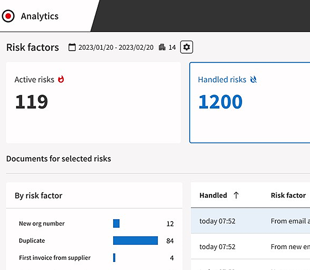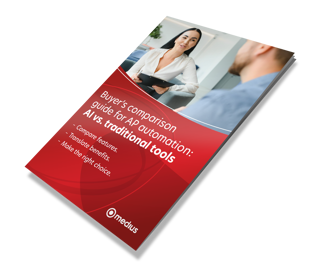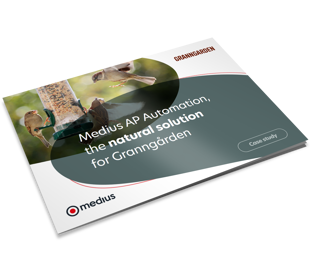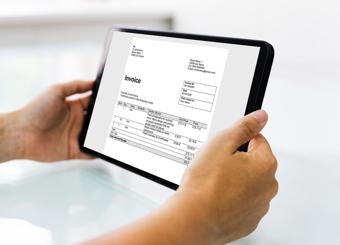5 AI-powered tactics for touchless accounts payable
- Introduction
- Tactic 1: Automate invoice capture at scale
- Tactic 2: Create auto-routing rules that get smarter over time
- Tactic 3: Shrink cycle time with intelligent matching
- Tactic 4: Track the metrics that matter most
- Tactic 5: Improve supplier input, collaboration, and processes
- The future of AP is touchless with Medius
Hear what's covered in this article:
Accounts Payable isn’t only about paying invoices anymore. It’s a strategic lever for improving cash flow, reducing costs, and building resilience. In 2025, touchless processing isn’t a future goal. It’s the new baseline, thanks to AI.
Whether you're still chasing down approvals or have already started automating, these five AI-powered tactics will help you move closer to a fully autonomous AP process, where invoices are captured, coded, routed, and paid with minimal to no human intervention.
65% of finance leaders say AP’s impact is significant to transformational over the next two years.
And, 77% are either using or plan to use AI in the next 12 months.



Automate invoice capture at scale
Manual data entry should be obsolete. However, the fact remains that nearly 50% of invoices received are still submitted on paper or manually. How do we solve this ongoing challenge?
Today’s AP leaders use AI-driven invoice capture to extract data, whether it comes through email, EDI, or scanned PDFs. With optical character recognition (OCR) and machine learning (ML), systems quickly learn supplier formats and flag low-confidence fields, enabling teams to achieve touchless capture with confidence.
Here’s what that looks like in practice:
- Touchless capture rates for PO invoices exceed 99.3%
- Systems learn formats after just a few invoices
- Automated data extraction for PDF, EDI, and email-based invoices reduces errors and saves time

Create auto-routing rules that get smarter over time
According to Ardent Partners, approval time remains the largest challenge for AP today. But it doesn’t have to be.


It’s true. For non-PO invoices, approvals can drag, unless you're using dynamic AI routing. By analyzing invoice type, amount, department, or vendor behavior, AI can instantly route invoices to the right person or queue.
With AI-driven routing in place, AP teams are seeing results like:
- Top performers route nearly 99% of non-PO invoices automatically
- Logic that adapts as your organizational structure and spending behaviors change
- AI models are capable of auto-filling coding, tax, and approval fields with 95% precision after just two invoices
Non-PO Invoices
98.8%
Touchless Capture Rate
99.6%
Automatic Approval Routing
0.7 day
Average Approval time
2 days
Total Processing Time
Best-in-class performance for non-PO invoice processing. See more benchmarks.

Shrink cycle time with intelligent matching
PO-based invoices benefit greatly from intelligent line-item matching. Smart AP tools compare invoice data to one or more purchase orders (POs) and flag discrepancies before they cause bottlenecks or require manual review.
When applied effectively, intelligent matching can lead to:
- Processing time for PO invoices reduced to as little as one day
- Matching logic that evolves with supplier formats and exceptions over time
- Fewer touchpoints, faster approvals, and higher first-pass match rates
PO Invoices
99.3%
Touchless Capture Rate
92.3%
Touchless Processing Rate
1 day
Total Processing Time
Best-in-class PO invoice processing rates. See more.

Track the metrics that matter most
You can’t optimize what you don’t measure. The most effective AP teams monitor metrics like touchless rate, cycle time, exception rate, and manual touches per invoice, then use that data to refine rules and justify changes.
Teams that track and act on the right data are achieve:
- Invoices processed up to 82% faster than peers
- Internal and peer benchmarks driving transparency and accountability
- Insights that support automation investments and continuous improvement



Improve supplier input, collaboration, and processes
Touchless AP isn’t just about smoothing internal workflows. It also depends on strong relationships with suppliers. Working well with suppliers means invoices come in the right format, follow-up questions are minimized, and approvals happen faster.
Smart AP teams invest in tools and processes that make it easier for suppliers to connect with their systems. This helps both sides move toward full automation faster and with less hassle.
Here’s how supplier collaboration is evolving to drive touchless AP success:
- Approvers get smart prompts and all the context they need on invoices with AI assistants, making it easier and quicker to make confident decisions.
- Suppliers get real-time invoice and payment status updates automatically, cutting down on inquiry emails and increasing transparency
- Efforts to transition suppliers from paper to electronic invoicing start with accepting PDFs and gradually advance to structured, compliant e-invoice formats, boosting efficiency and scalability
The future of AP is touchless with Medius
Medius helps accounts payable teams move beyond automation toward autonomy. With embedded, agentic AI across every step of the invoice process—from capture to approvals to supplier engagement—AP teams get more done with less manual work.
Whether you’re starting your automation journey or refining a mature AP process, Medius makes touchless AP not only possible but also sustainable.

What about fraud?
Medius’ AI solutions make it easy to manage spending, enforce policies, cut down on fraud, and lower risk.

What exactly does AI in AP do?
See in the Buyer’s comparison guide for AP automation: AI vs. traditional tools.

AI at work with a real customer.
“Medius provides state-of-the-art AI and machine learning that is superior to the system we had in place. It actually grows 'smarter' with every invoice.”







